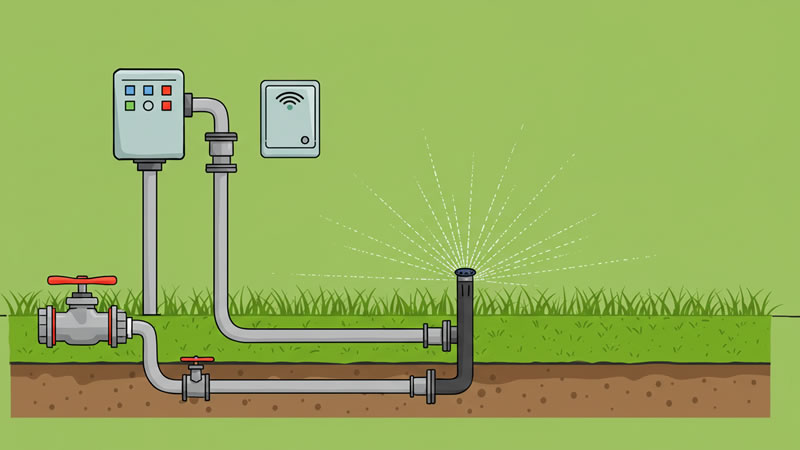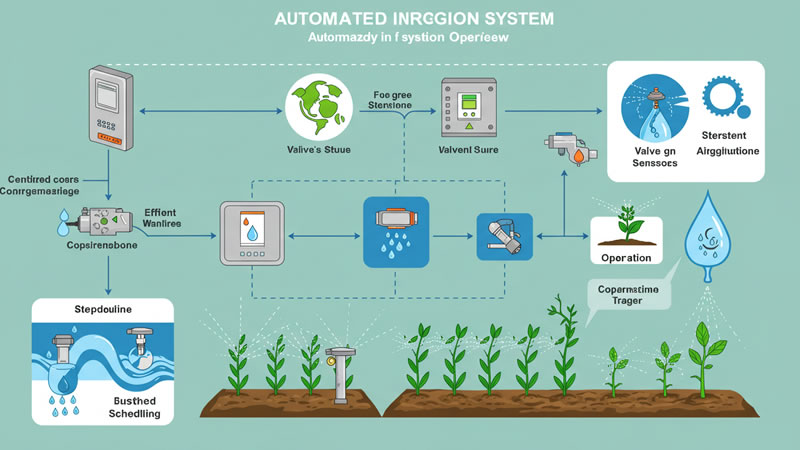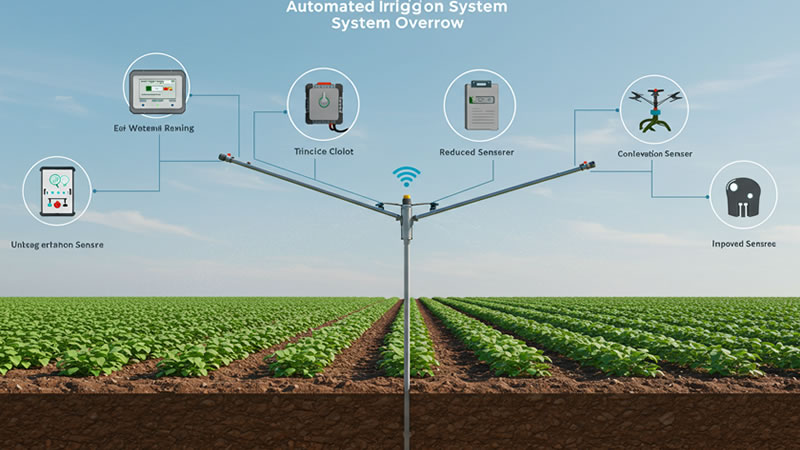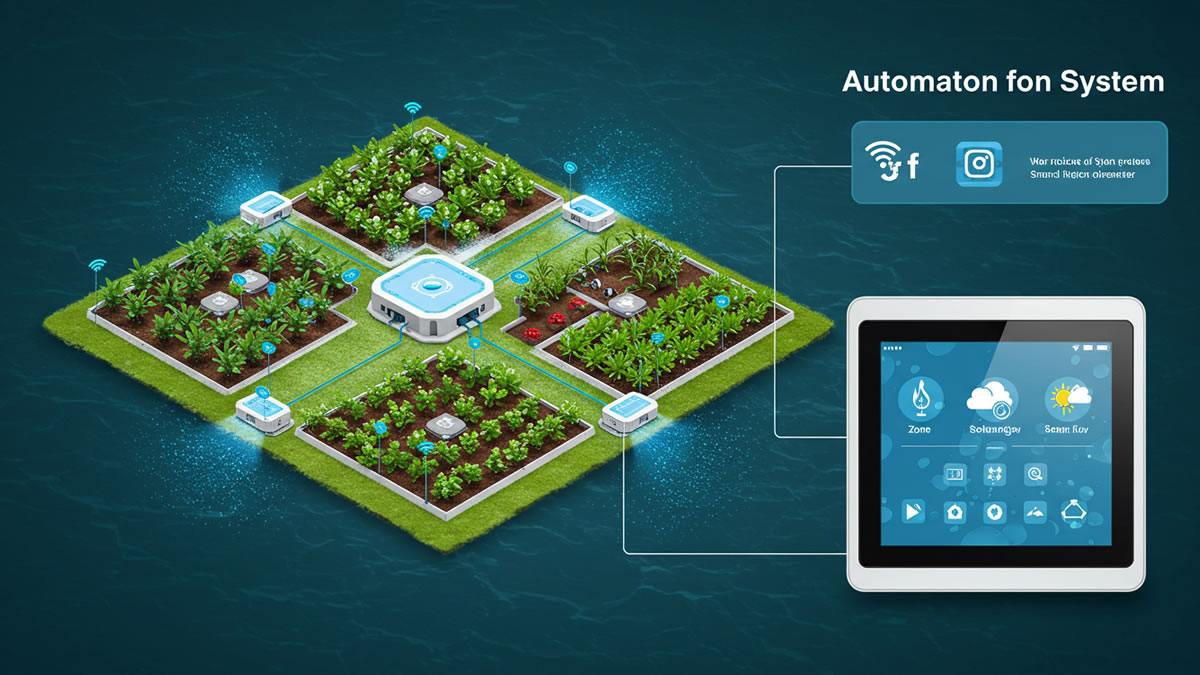Automated Irrigation System Overview
Automated Irrigation System: An automated watering framework is engineered to hydrate vegetation without manual involvement. It depends upon detectors, schedulers, and occasionally climate data to deliver the accurate quantity of liquid demanded. Within conservatories, these installations may feature sprayers, trickle irrigation, or a mixture of both, tailored for every crop’s necessities.
Such mechanized frameworks eliminate the doubt from irrigation entirely. You no longer require anxiety concerning excessive watering or insufficient watering; the mechanism accomplishes everything for you.
What Exactly Is an Automated Irrigation System?
An automated irrigation System mechanism represents a network structured to hydrate crops without human labor. Through employing sensors, timers, and meteorological inputs, it guarantees vegetation obtains precisely the correct quantity of fluid. In conservatories, comparable structures might deploy overhead sprinklers, drip pipelines, or a combination of the two, adapted to individual plants’ necessities.

Categories of Automated Irrigation in Greenhouses
Overhead Sprayers: Frequently applied in mechanized irrigation, these distribute consistent moisture across extensive regions. They’re appropriate for numerous vegetation categories and cover larger zones successfully.
Drip Watering: This technique supplies hydration instantly to plant roots, limiting wastage. It performs ideally for species that are delicate to damp foliage or in arrangements where liquid preservation is vital.
Sprayers vs. Drip Units: Sprayers are simpler to establish and irrigate more ground, while drip networks conserve extra water and deliver accurate distribution. The preference relies upon your vegetation plus conservatory arrangement.
An overhead automated irrigation System functions by hydrating vegetation from above, imitating rainfall. Tactically arranged sprinklers confirm complete coverage, ensuring each plant obtains balanced moisture. In contrast to drip irrigation, which concentrates on roots, overhead sprayers replicate genuine rain and saturate the entire plant, essential in conservatories where equality is critical.
Which Irrigation Technique Is Most Suitable?
The correct selection relies upon conservatory dimension and vegetation diversity. Overhead sprayers suit broad areas with blended harvests, providing uniform watering with effortless servicing. Drip frameworks remain far more meticulous, reducing fluid loss while permitting superior management. Numerous cultivators merge both techniques for optimal outcomes. Mechanized frameworks permit seamless transitions between choices.

Advantages of Automated Irrigation Systems in Greenhouses
Saves Period and Water: No requirement to devote hours to irrigating manually; the network completes it proficiently.
Economical: Although initial establishment may appear costly, enduring savings in liquid and manpower prove significant.
Enhanced Cultivation: Consistent hydration stimulates stronger vegetation, preventing under- or over-watering difficulties.
Smart Irrigation System FunctionsIntelligent irrigation merges soil-moisture detectors, meteorological tracking, and even crop-health observation. Inside conservatories, such frameworks modify hydration volumes automatically according to circumstances. During hot, bright days, water distribution expands; on cooler, moist days, it diminishes, assuring effectiveness.
Discover all our featured content directly at techdives.online
Water Quantity and Scheduling Regulation
Automated frameworks may be adjusted for accurate quantities at chosen intervals, even adapting through varying plant development phases. Within conservatories, this supports gentle watering mornings or evenings, minimizing wastage and maintaining balanced timetables.
Strengths of Overhead Irrigation
Broad distribution for assorted arrangements.
Simple to service after installation.
Replicates rainfall, favorable for vegetation preferring natural moisture.
Main Goals of Automated Irrigation
Offer stable hydration with minimal human participation.
Stop fluid squandering by employing exact measures.
Elevate crop development by avoiding pressure caused by poor watering.

Financial Efficiency
Although preliminary expenditure may appear steep, mechanized irrigation frameworks conserve water, labor, and eventual expenses. Strong contemporary frameworks need little upkeep yet guarantee vigorous plant yields.
Difficulties and Remedies
Blocked sprinkler nozzles or defective sensors might disrupt watering. Routine cleansing and servicing solve numerous complications, maintaining frameworks dependable. Troubleshooting remains generally uncomplicated.
Final Thoughts
Automatic irrigation System inside conservatories is more than suitable; it’s a strategic investment. These frameworks save time, preserve water, and provide consistent nurturing, creating robust and more profitable crops. Whether commencing new or upgrading, the school of the arts proprietors may rely on these methods to deliver capable, dependable, and eco-friendly farming.
How does an automated irrigation system benefit greenhouse owners?
It saves time, reduces aquatic use, and ensures regular plant growth with nominal manual effort.
Which irrigation method is better, sprinklers or drip systems?
Both have gains: sprinklers cover large areas easily, while drip systems save water and target roots precisely.
Can automated irrigation systems adjust to weather chans?
Yes, smart systems use sensors and meteorological conditions data to alter watering mechanically for maximum efficiency.
Are automated irrigation systems cost-effective in the long run?
Absolutely. While setup costs may be high, they save money on water, labor, and maintenance over time.
Do automated systems help improve plant health?
Yes, by preventing overwatering or underwatering, these systems help sturdier, healthier, and more creative plants.







